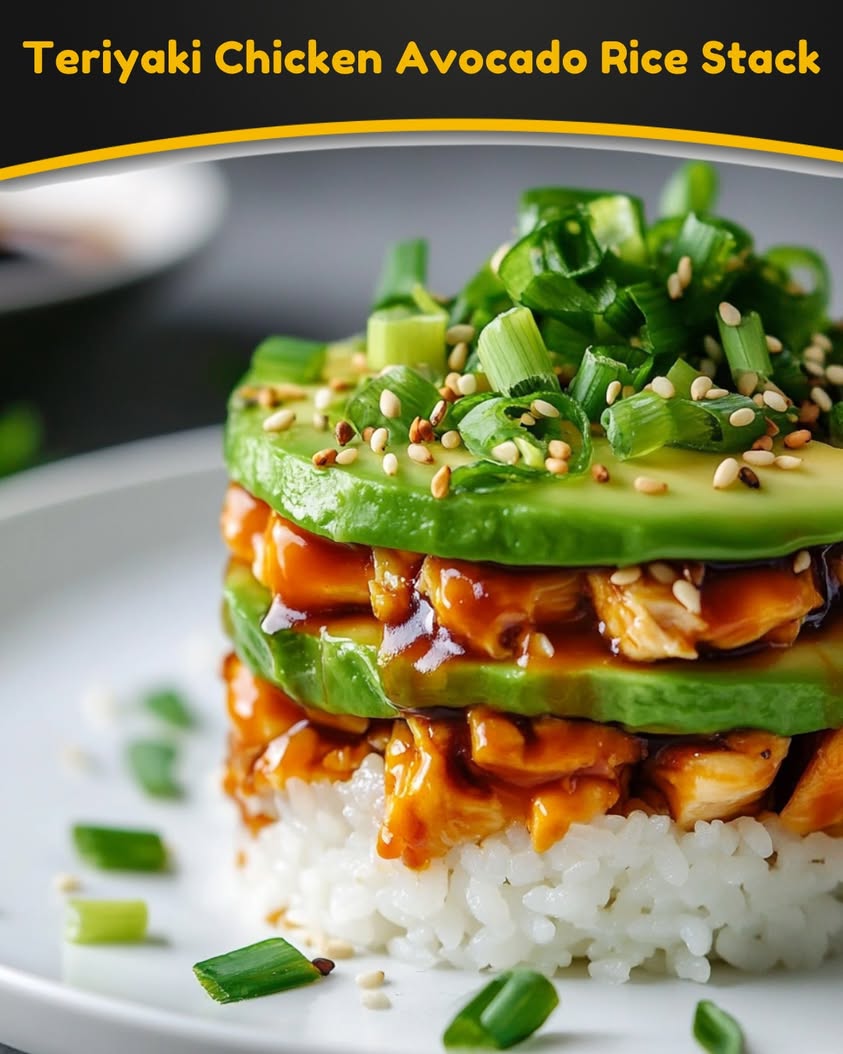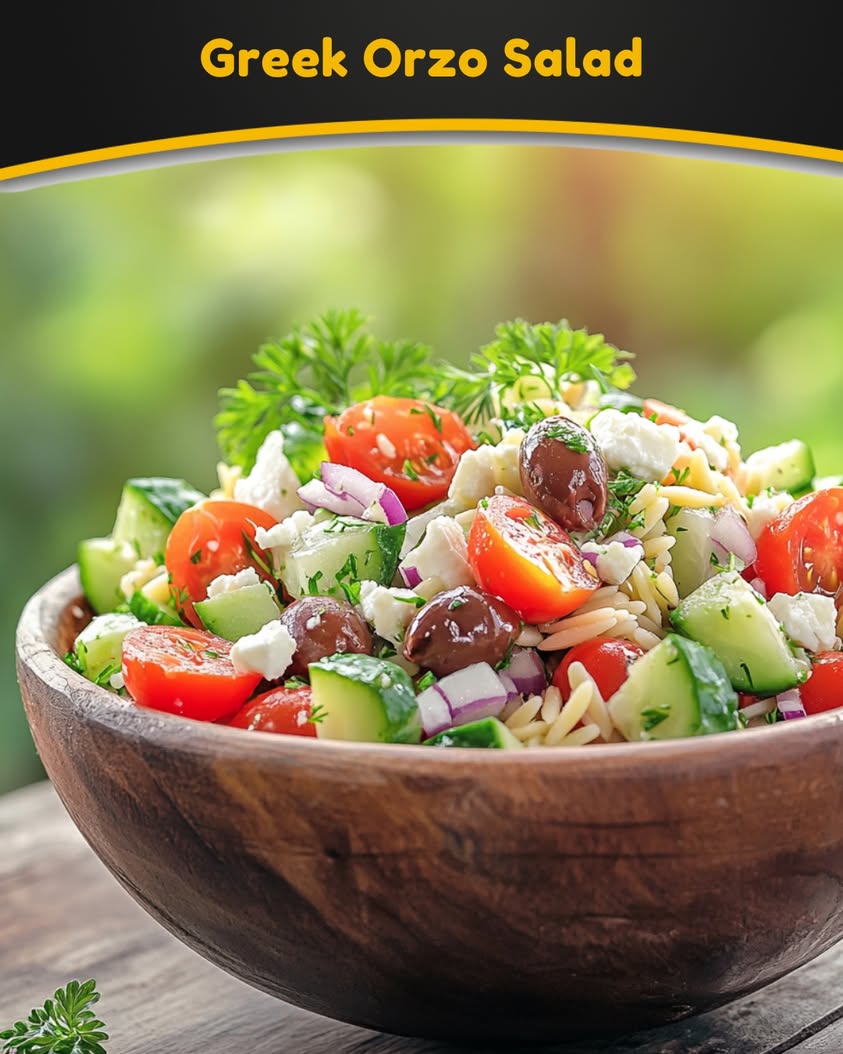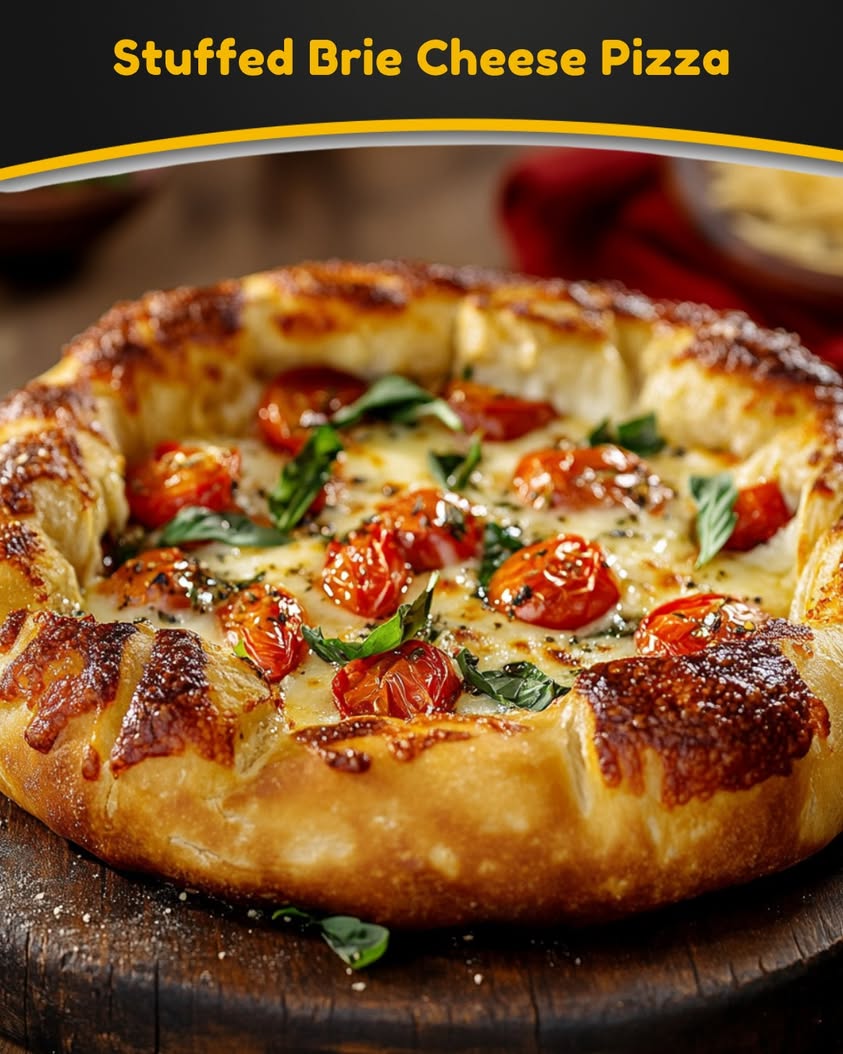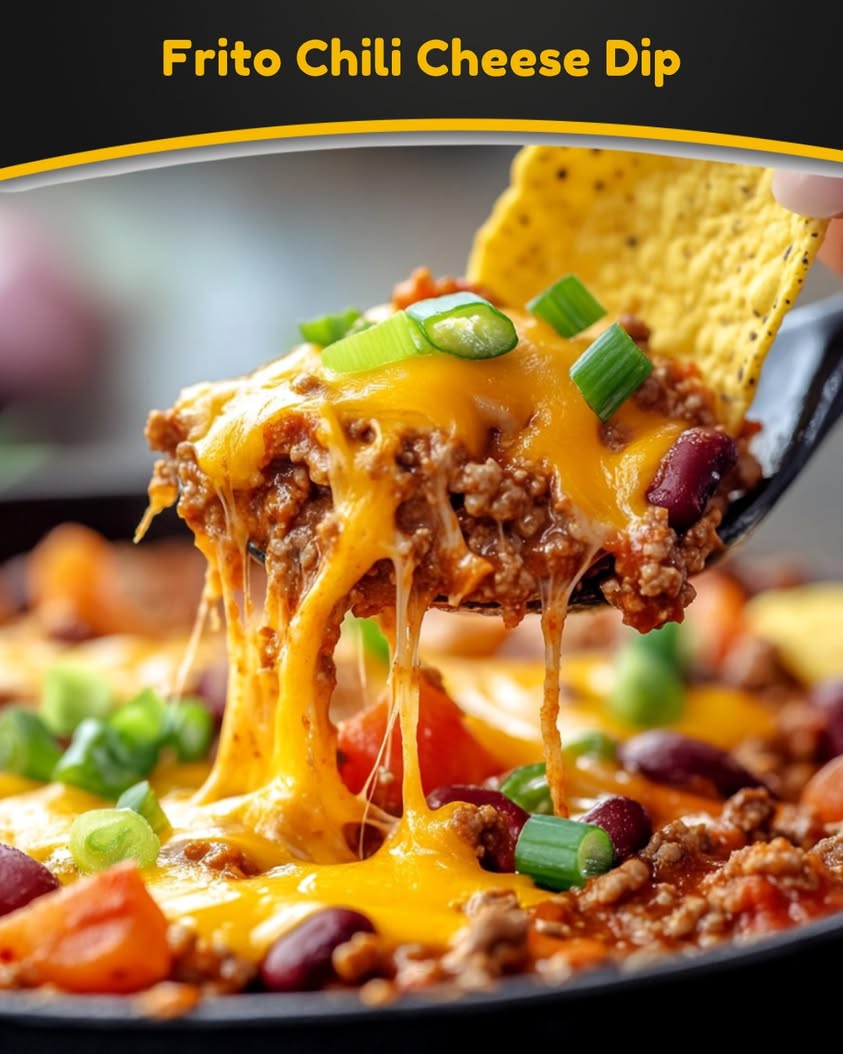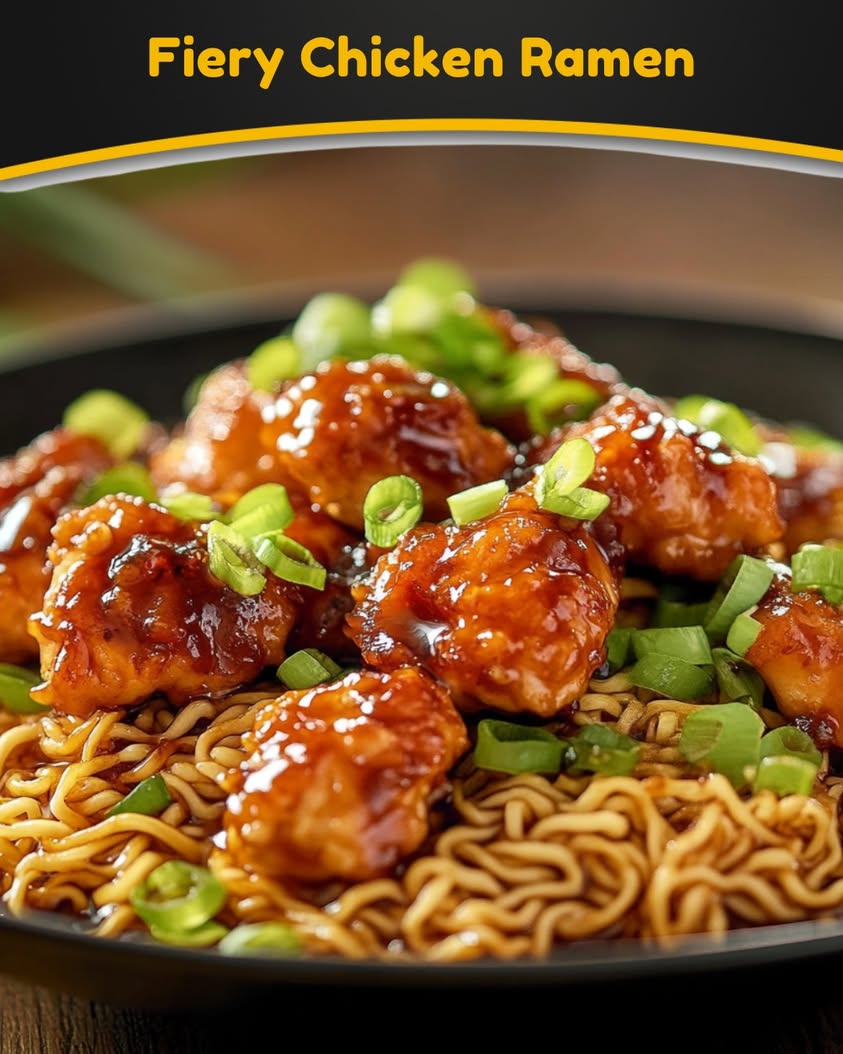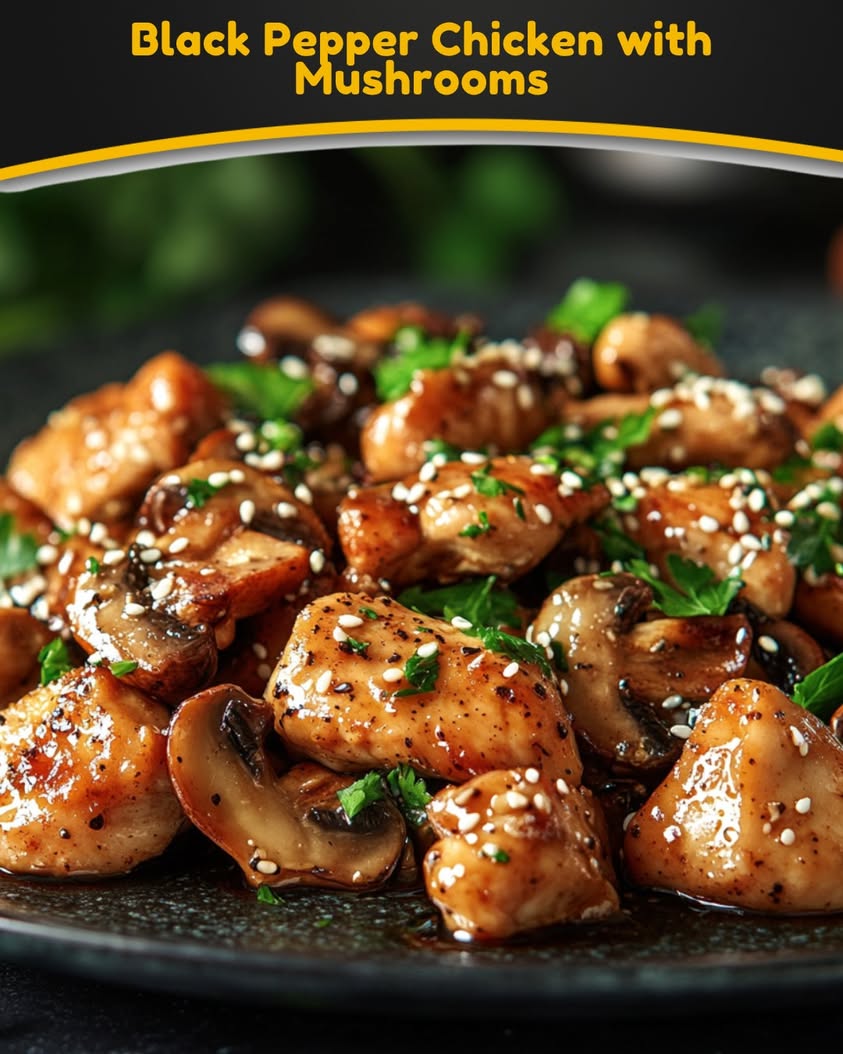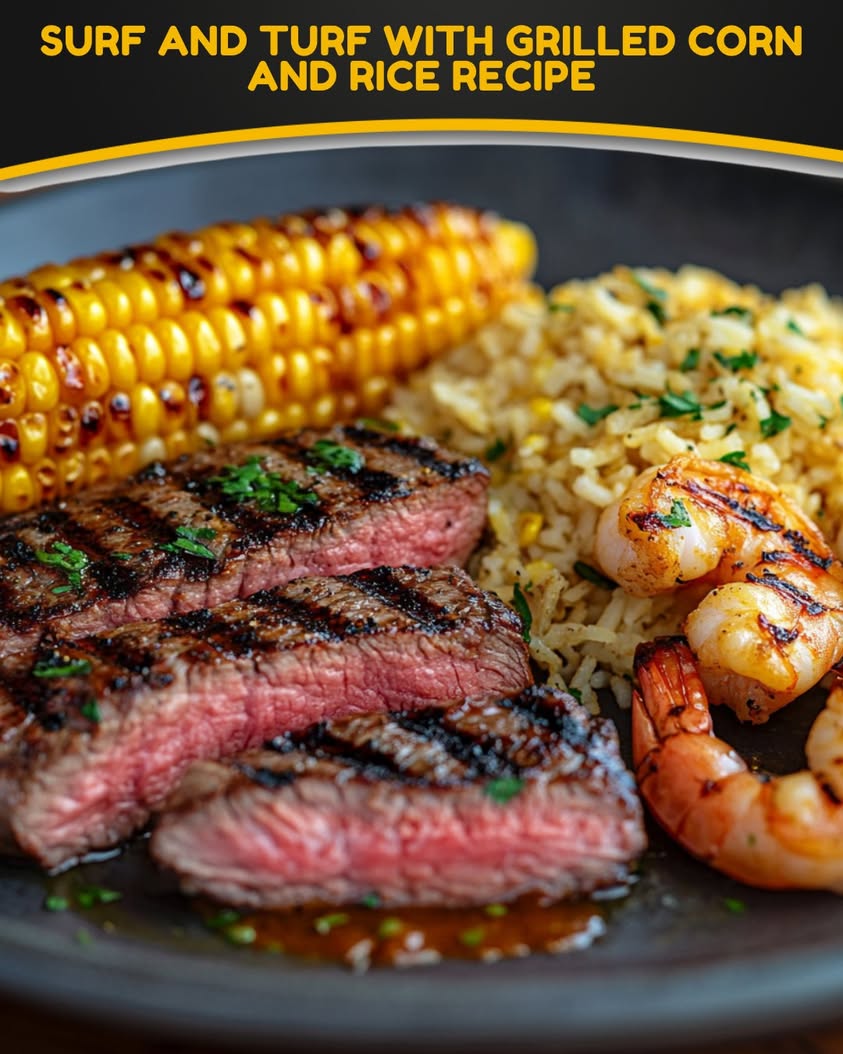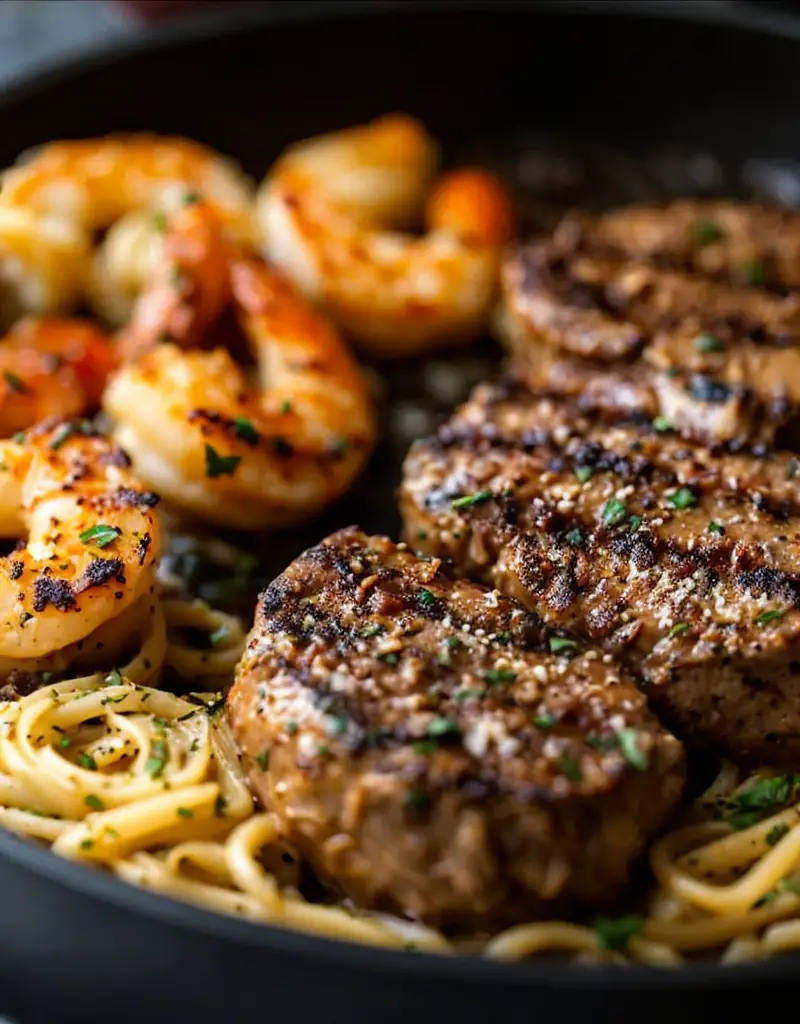Teriyaki Chicken Avocado Rice Stack: A Flavorful Asian Delight
Teriyaki Chicken Avocado Rice Stack is not just a meal; it’s a symphony of flavors and textures that elevates your dining experience. Imagine juicy pieces of chicken, marinated and glazed in a sweet and savory teriyaki sauce, served over fluffy rice, perfectly topped with creamy avocado slices. Each bite delivers the umami richness of traditional Japanese cuisine, paired seamlessly with the lushness of ripe avocados. This dish is perfect for anyone seeking a quick yet delicious dinner on a weekday or a standout dish for a weekend gathering.
The combination of the warm rice and tender chicken with the cool, smooth avocado is just delightful. You can customize your stack to add colorful vegetables, adding both nutrition and visual appeal to this stunning plate. Your taste buds will thank you as you savor every layer, enjoying a balance of sweetness, saltiness, and texture that makes this dish truly mouthwatering.
Quick Recipe Highlights
- Flavor Profile: The dish boasts a delectable balance of sweet, savory, and slightly tangy flavors thanks to the teriyaki sauce.
- Texture: The tender chicken contrasts beautifully with the creamy avocado and fluffy rice, creating a delightful mouthfeel.
- Aroma: The wafting scent of grilled chicken mixed with hints of soy sauce and sesame elevates the dish’s allure.
- Visual Appeal: Layers of colorful ingredients make for a stunning presentation, with vibrant greens from the avocado and rich browns from the chicken.
- Skill Level Needed: With basic cooking skills, anyone can master this recipe and impress family and friends.
- Special Equipment: All you need is a skillet for quick cooking and some bowls for serving and stacking your delicious dish.
Recipe Overview
- Difficulty Level: This recipe is classified as medium, making it approachable for home cooks with some experience in the kitchen.
- Category: This dish fits well under the category of Asian-inspired meals, perfect for lunch or dinner.
- Cuisine: With its roots in Japanese cuisine, the teriyaki sauce offers an authentic taste of Japanese culinary traditions.
- Cost: The ingredients are relatively affordable, making this a budget-friendly option for those wanting a gourmet feel.
- Season: Enjoy this recipe year-round, as avocados and chicken are readily available in all seasons.
- Occasion: Ideal for family dinners, meal prep, or entertaining guests who appreciate flavorful and visually pleasing dishes.
Why You’ll Love This Recipe
This Teriyaki Chicken Avocado Rice Stack is a feast for your taste senses, offering an explosion of flavors in every bite. The chicken, marinated in a delightful blend of teriyaki sauce, absorbs all the sweet and savory goodness, while the creamy avocado complements the dish beautifully, ensuring a balanced meal. The rice adds a comforting element that will leave you satisfied and craving more.
What sets this recipe apart is its convenience and preparation benefits. The total cooking time of just 35 minutes makes it easy for busy families to whip up a delicious dinner without stress. Plus, the ability to prep ingredients ahead of time allows for quick assembly when you’re ready to eat, making it ideal for meal prepping or spontaneous gatherings.
In terms of nutritional advantages, this dish is not only scrumptious but also packed with essential nutrients. Chicken provides high-quality protein, avocados are an excellent source of healthy fats, and rice gives a good energy boost, making this meal balanced and fulfilling.
Serving this recipe is more than just about nourishment; it offers social and entertaining value as well. The visually appealing layers encourage sharing and make it a conversation starter among friends and family, ensuring an engaging dinner atmosphere.
Lastly, one of the most striking appeals of the Teriyaki Chicken Avocado Rice Stack is its cost-effectiveness. Using everyday ingredients that are often found in your kitchen makes this dish accessible, whether you are on a budget or just looking to create something satisfying without breaking the bank.
Historical Background and Cultural Significance
The origins of teriyaki sauce, traditionally a combination of soy sauce, sake, mirin, and sugar, date back centuries in Japanese cuisine. Initially enjoyed by the samurai, teriyaki became popular with the spread of Japanese culture. Eating teriyaki chicken symbolizes a love for flavorful, grilled meats in Japan.
In Japan, teriyaki is more than just a cooking method; it reflects the country’s dedication to culinary craftsmanship, emphasizing fresh, high-quality ingredients. As teriyaki chicken gained traction worldwide, it transformed into a beloved dish that transcends cultural boundaries, consistently represented on menus from fast casual to gourmet dining experiences.
Over the years, the evolution of this recipe has adapted to local tastes and preferences. Instead of grilling or broiling, modern takes often involve pan-frying or even air-frying for a quicker preparation time. Similarly, ingredient variations, such as using different proteins or expanding it to vegetarian formats, have become increasingly popular.
Regional variations of teriyaki chicken can be observed in local cuisine adaptations. In Hawaii, for example, teriyaki chicken has become a staple, often served with rice and mac salad, showcasing the beautiful cross-cultural fusion in American takes on traditional dishes.
Ingredient Deep Dive
Chicken: Chicken has significant cultural importance in many cuisines, including Japanese, where it symbolizes strength and sustenance. Nutritional benefits are abundant, as chicken is an excellent source of protein and essential vitamins like B6, which helps with mood regulation and energy production. When selecting chicken, look for fresh, high-quality cuts and ensure proper storage in the refrigerator to maintain freshness. For substitutions, turkey or tofu can be viable alternatives depending on dietary preferences.
Avocado: Often regarded as a superfood, avocados have a long history in Central and South American cuisines, where they are beloved for their rich flavor and creamy texture. Nutritionally, they are packed with healthy fats, fiber, and nearly 20 vitamins and minerals. When choosing avocados, opt for ones that yield slightly to gentle pressure, indicating ripeness. Proper storage in a cool, dark place preserves their integrity, while freezing can alter texture; hence it’s best used fresh. For substitution, other creamy accompaniments like hummus or nut butters can be used according to your preference.
Common Mistakes to Avoid
- Overcooking the chicken can lead to dryness; ensure to cook to the correct internal temperature, around 165°F (75°C).
- Using unripe avocados may affect your dish’s creaminess; always choose ripe ones for the best results.
- Not marinating the chicken long enough can result in lack of flavor; aim for at least 30 minutes.
- Using too much teriyaki sauce can overwhelm the dish; balance flavors by using it sparingly at first, then adding more as needed.
- Skipping the resting time for the chicken after cooking can cause the juices to run out; allow it to rest for a few minutes.
- If you prepare ingredients in advance, be cautious of browning; avocados can oxidize quickly, so store them properly.
- Failing to taste and adjust seasoning at the end of cooking can result in a flat flavor profile; be sure to season to your liking.
- Ignoring the importance of presentation can lead to an uninspired dish; take time to stack and garnish thoughtfully.
- Not using a non-stick skillet may result in sticking; ensure your pan is suitable for cooking chicken.
- Forgetting to rinse rice can lead to a gummy texture; always wash your rice before cooking for fluffy results.
Essential Techniques
Marinating: Marinating the chicken not only flavors it but also tenderizes the meat, making for a juicier and more enjoyable dish. To master this technique, allow the chicken to soak in the marinade for at least 30 minutes; longer is even better for deeper flavor. Avoid overcrowding in the container, which can limit the marinating effectiveness.
Layering Ingredients: The art of stacking your ingredients properly is crucial for presentation and flavor distribution. Begin with a base of rice, followed by the marinated chicken, and top with slices of avocado. Be conscious of balance and heights when assembling, as a well-structured dish is visually appealing.
Pro Tips for Perfect Teriyaki Chicken Avocado Rice Stack
1. Always choose ripe avocados, as they will yield the best texture with your dish. Test ripeness by applying gentle pressure; ripe should feel slightly soft.
2. Enhance flavors by adding a sprinkle of sesame seeds over the finished dish; they provide a delightful crunch.
3. Explore different marinades to switch up the teriyaki flavor, such as incorporating ginger or garlic for added zest.
4. If you enjoy a spicier twist, consider drizzling sriracha or adding crushed red pepper to the marinade for a heat element.
5. For optimal cooking, use a meat thermometer to ensure your chicken reaches the recommended internal temperature.
6. Keep your workstation organized; prepping ingredients in advance can simplify the cooking process.
7. Experiment with seasonal vegetables; adding seasonal favorites can enhance freshness and flavor.
8. Create a meal-prep version by stacking the ingredients in containers for easy lunch options throughout the week.
Variations and Adaptations
There are countless ways to modify this Teriyaki Chicken Avocado Rice Stack. For regional diversity, consider using different sauces that reflect local tastes, such as a spicy chili sauce or a pineapple glaze, adding a unique twist to the dish. Seasonal adaptations can introduce colorful toppings like cherry tomatoes or zucchini during summer, enhancing both flavor and nutrition.
Vegetarians can swap out the chicken for marinated tofu or tempeh, maintaining the flavorful profile while catering to different dietary needs. For those watching their carb intake, using cauliflower rice instead of regular rice is an excellent low-carb alternative that still allows for a delightful base.
Texture modifications can include grilling or air-frying the chicken for a crispier finish. Similarly, consider presentation alternatives like deconstructing the dish for a chic and modern look, or serving the ingredients separately for a fun assembly experience at the table.
Serving and Presentation Guide
Plating techniques play a vital role in showcasing your Teriyaki Chicken Avocado Rice Stack. Start by using a ring mold to stack your rice for a clean presentation, followed by arranging chicken and avocado neatly on top. Use a sprinkle of chopped green onions or cilantro to heighten the visual appeal.
Garnishing ideas could include a dollop of spicy mayo or teriyaki drizzle around the edge of your plate for a professional touch. Traditional accompaniments like pickled vegetables can add both color and tanginess to your dish.
If you’re looking for modern serving suggestions, consider creating deconstructed bowls in individual servings with all components beautifully arranged. Temperature considerations are essential; serve while the chicken is warm for the best experience, but consider cooling your avocado to preserve its creaminess.
For portion control, stack just enough for a single serving in your rings, allowing guests to admire the layers without overwhelming them.
Wine and Beverage Pairing
For wine pairings, a crisp Sauvignon Blanc complements the sweetness of the teriyaki sauce beautifully, enhancing your dining experience. Alternatively, a light, fruity Riesling can balance the flavors, especially if you incorporate additional spices.
If you’re opting for non-alcoholic alternatives, consider serving sparkling water with a slice of lime or a refreshing iced green tea to cleanse the palate between bites. For those who enjoy warmth, a cup of Japanese matcha tea brings a unique flavor depth that pairs well with the richness of the dish.
Ensure proper temperature for serving; white wines should be chilled, and sparkling options should be served fresh and cold to enhance the dining experience.
Storage and Shelf Life
To store leftovers of your Teriyaki Chicken Avocado Rice Stack, combine chicken and rice in an airtight container, ensuring it stays fresh for up to three days in the refrigerator. Avocado slices should be kept separate to prevent browning; store them in an airtight bag with a squeeze of lemon juice to retain their vibrant color.
When reheating, use the microwave, but cover it to trap steam and keep the chicken juicy. Avoid freezing avocado or rice; cooked chicken can freeze well for about two months, but reheating can affect texture. Always check for signs of spoilage, like off-odor or change in texture, before consuming.
Make Ahead Strategies
For a successful make-ahead approach, prep your chicken by marinating it the night before. Store marinated chicken in the refrigerator to allow maximum flavor development. You can also cook rice in advance and store it in the fridge for easy assembly later.
If you plan to serve this dish at a gathering, assemble all components except for the avocado beforehand to ensure a fresh presentation. When it’s time to dine, simply reheat your chicken and rice while slicing the avocado fresh for a vibrant touch just before serving.
Assess quality impacts between preparation and serving; storing made-ahead ingredients while separated retains flavor and texture. When it comes to reheating, ensure that everything warms up evenly for a consistent dish that’s delicious.
Scaling Instructions
Scaling the Teriyaki Chicken Avocado Rice Stack is straightforward. For halving the recipe, roughly adjust the amounts of each ingredient while keeping marination time consistent to maintain flavor profiles. When doubling or tripling, pay attention to cooking times, as larger amounts might require slight adjustments.
Equipment adjustments may be necessary; for large batches, consider using multiple skillets or a larger pot. Timing modifications come into play; always check for doneness, as thicker pieces of chicken may need more time compared to smaller cuts.
Stored ingredients should be monitored closely, especially if made in bulk to avoid spoilage. Portion control and distribution effects should be analyzed to ensure each serving keeps its flavorful and fresh attributes.
Nutritional Deep Dive
The Teriyaki Chicken Avocado Rice Stack provides a well-rounded macro breakdown. With chicken contributing high protein content, avocado delivering healthy fats, and rice giving carbohydrates, this dish satisfies a complete nutritional profile suitable for various diets.
Micronutrient analysis reveals that you benefit from a variety of vitamins and minerals found in each component, such as vitamin E from avocados that promotes skin health and B vitamins from chicken that assist in energy production. These nutrients play vital roles in maintaining a balanced diet and overall health.
Health benefits of this meal extend beyond pleasing taste; the combination of lean protein, healthy fats, and complex carbohydrates offers sustainable energy, supporting an active lifestyle. Dietary considerations such as portion size can impact individual needs; being aware of serving sizes helps to maintain a healthy balance.
For weight management, consider the nutritional density of ingredients; avocados are rich in fiber which promotes satiety, making your meal filling without excess calories. Pairing these components wisely will help manage intake while enjoying every bite.
Dietary Adaptations
This recipe can cater to various dietary needs, starting with gluten-free options; ensure your teriyaki sauce is gluten-free, and follow similar cooking procedures. Dairy-free adaptations involve checking the marinades and sauces used for hidden dairy ingredients.
For those interested in vegan versions, substitute chicken with tofu, ensuring to marinate it adequately for flavor. Low-carb adherents may reconsider the rice and utilize cauliflower rice, keeping the dish light yet fulfilling.
Keto enthusiasts can switch out the teriyaki sauce for a homemade version using low-carb sweeteners to maintain flavor. For paleo diets, focus on natural ingredients while replacing rice with grains like quinoa.
Consider the low-FODMAP diet by avoiding garlic and onion in marinades and sauces. Other specific diets may require personalized substitutions or adjustments based on individual dietary needs, ensuring everyone can enjoy this dish.
Troubleshooting Guide
For texture issues, the key is careful monitoring during the cooking process. If the chicken comes out dry, consider reducing cooking time or using a marinating technique more effectively to retain moisture. If the rice is overly sticky, remember to rinse well before cooking to achieve fluffy grains.
Flavor balance challenges can arise; if the dish is too salty, consider adding a splash of rice vinegar to refresh the taste. Temperature problems with ingredients often stem from improper timing; ensure that chicken is cooked evenly throughout while monitoring other components for optimal warmth.
Equipment challenges can arise if using different cooking methods; ensure you’re familiar with how heat distributes in your appliances. Ingredient substitutions may not yield the same results, so it’s essential to research prior to altering any key components.
Timing concerns during preparation can lead to rushed dishes; always think ahead, prep properly, and allow time for thoughtful assembly and cooking.
Recipe Success Stories
Reader feedback consistently showcases how accessible and enjoyable the Teriyaki Chicken Avocado Rice Stack has become in many households. Home cooks often share stories of how simple modifications made this dish their own— from adding seasonal vegetables to adapting cooking methods.
Many have praised the recipe for being an instant hit with families, where children and adults alike are delighted by the flavor balance and vibrant presentation. As for photography tips, many have successfully captured the beautiful layers and colors, sharing on social media and encouraging others to try their hand at this visually appealing dish.
Adaptation stories further reflect the versatility of the ingredients, with individuals submitting reviews on how they’ve made the dish better suited to dietary needs or personalized tastes. Suggestions often include enhancing flavors with unique marinades, topping it with unexpected ingredients, or even serving it as part of a themed dinner party for entertaining friends.
Frequently Asked Questions
A: Absolutely! Tofu, shrimp, or even beef can be excellent alternatives while maintaining the dish’s essence.
Q: How do I ensure my rice is cooked perfectly?
A: Rinse the rice thoroughly before cooking to remove excess starch, which helps achieve fluffy results.
Q: Can I make this dish ahead of time?
A: Yes, you can prep the chicken and marinate it a day in advance. Just add the avocado right before serving to keep it fresh.
Q: What other sauces can I use instead of teriyaki?
A: Feel free to experiment with honey soy glaze, BBQ sauce, or even a spicy chili sauce for a different flavor profile.
Q: How do I store leftovers?
A: Store the chicken and rice in an airtight container in the fridge for up to 3 days, keeping the avocado separate to avoid browning.
Q: Can I freeze this dish?
A: You can freeze the cooked chicken and rice but avoid freezing the avocado. Thaw in the fridge overnight before reheating.
Q: What vegetables can I add to this recipe?
A: Bell peppers, carrots, or snap peas add both color and nutrition, enhancing the overall dish.
Q: Is this recipe suitable for meal prep?
A: Definitely! All elements can be prepped in advance and assembled quickly when you’re ready to serve.
Q: Can this recipe be made spicy?
A: Yes, adding red pepper flakes or a spicy teriyaki sauce can add a kick to your dish.
Q: How can I enhance the flavor without additional calories?
A: Fresh herbs like cilantro, and lime juice can add brightness without significantly impacting calories.
Additional Resources
Explore related recipes such as grilled teriyaki salmon, which offers similar flavors while switching up the protein. For more techniques, check our guide on mastering marinades or visit the ingredient section for detailed profiles on chicken and avocado.
For equipment recommendations, ensure you have a sturdy skillet and a quality rice cooker for the best results. Consider seasonal variations with fresh produce available to keep your dish exciting year-round.
Join the Conversation
We encourage you to share your experience with the Teriyaki Chicken Avocado Rice Stack on social media and engage with fellow food enthusiasts. Share your unique photos and modifications, and let us know your favorite tips for making this dish your own.
Don’t forget to leave your reviews and feedback on this recipe, helping to foster a community where everyone can find inspiring ways to enjoy cooking together. We’d love to hear your variation stories and the special moments this recipe has created in your home!
The Recipe
Teriyaki Chicken Avocado Rice Stack
Serves: 4
Prep Time: 15 mins
Cook Time: 20 mins
Total Time: 35 mins
Kitchen Equipment Needed
- Non-stick skillet
- Cutting board
- Knife
- Rice cooker (optional)
- Mixing bowl
- Ring mold (optional for presentation)
Ingredients
- 1 lb boneless chicken thighs
- ⅓ cup teriyaki sauce
- 2 cups cooked jasmine rice
- 2 ripe avocados, sliced
- 2 green onions, chopped
- Sesame seeds for garnish (optional)
Directions
- Marinate chicken in teriyaki sauce for at least 30 minutes.
- Cook the rice according to package instructions; set aside.
- Heat a non-stick skillet over medium heat; cook the marinated chicken for 5-7 minutes on each side until fully cooked.
- Remove chicken from skillet and let it rest for a few minutes before slicing.
- In individual plates or bowls, layer the cooked rice, top with sliced chicken, and then layer sliced avocado on top.
- Garnish with chopped green onions and sesame seeds if desired, serve immediately.
Recipe Notes
- Feel free to customize with other vegetables or switches in protein.
- Use brown rice for a healthier grain option.
- Experiment with marinades and sauces to suit your palate.
